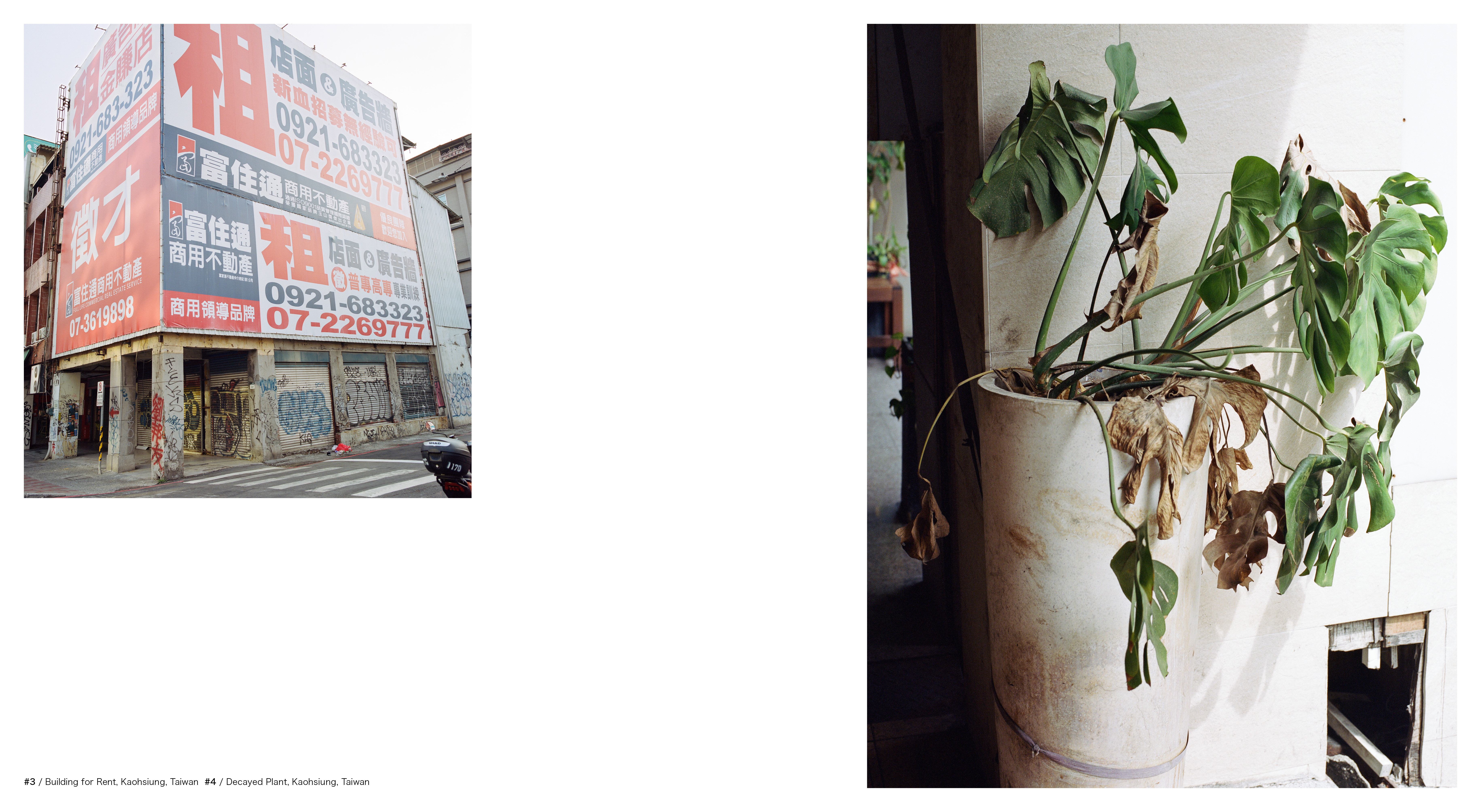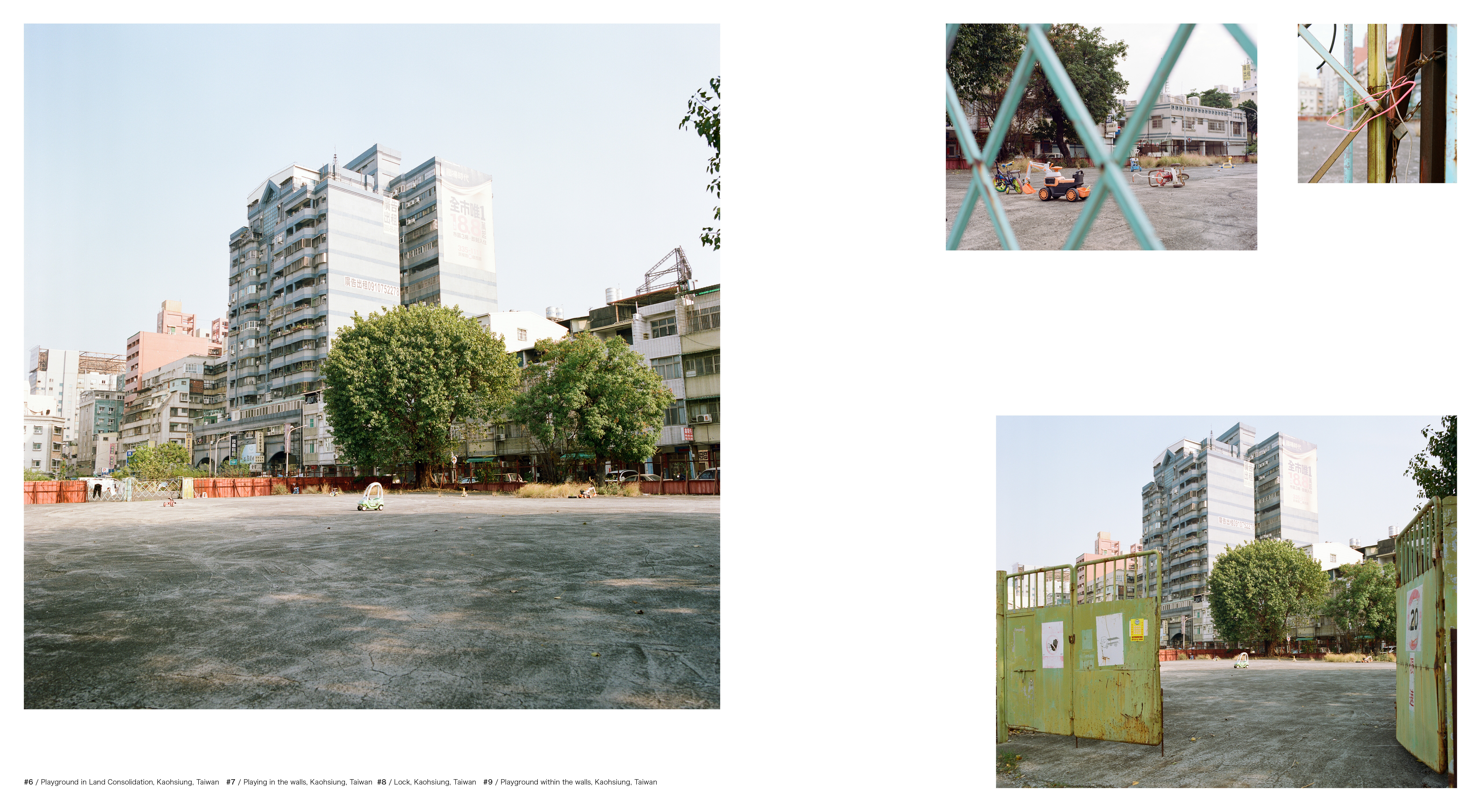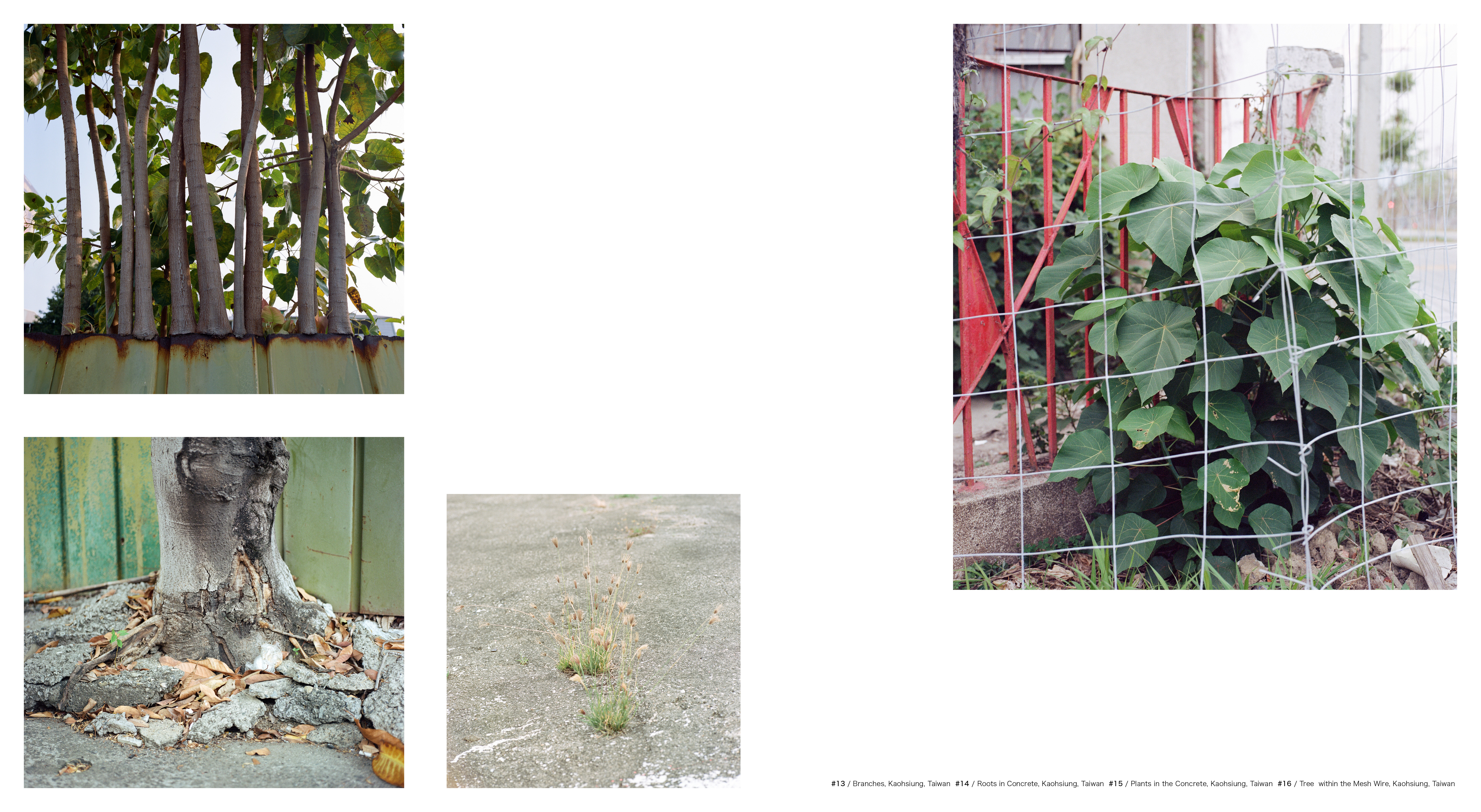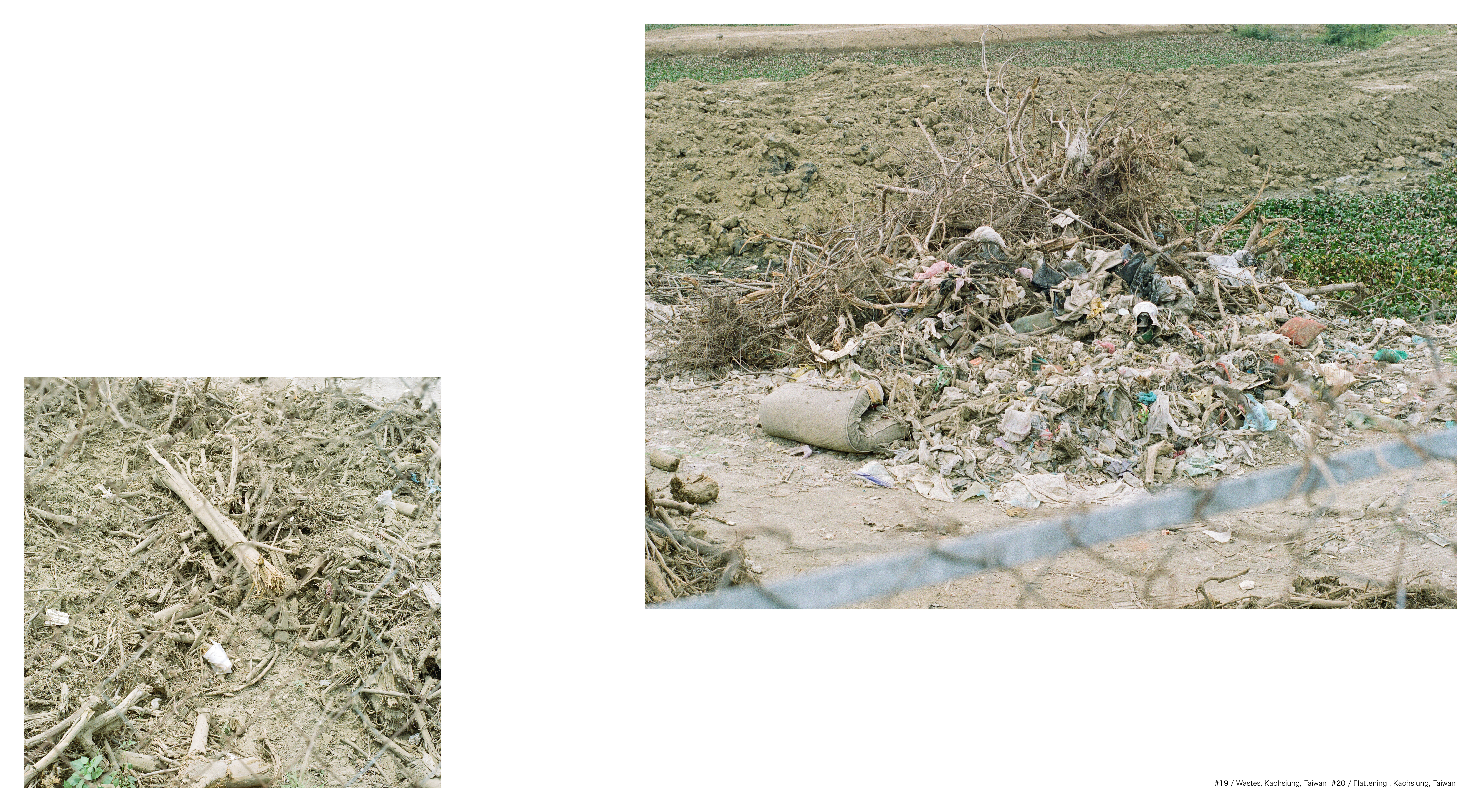都市蔓延:從城市到邊緣
Sprawl - From the Inside out
2021








 我拍攝了從高雄市中心到郊區的閒置空間。「閒置」一詞似乎意味著這些地方處於穩定不變的狀態,但實際上,郊區的荒地現在正經歷著快速的變化,很快就會有建築或其他建設。然而,儘管城市不斷擴張,高雄的市中心空間實際上正在萎縮,並達到了十年來的最低人口。等待出租的空樓和舊區需要更新。鐵絲網和柵欄圍住了這些區域,表明了它們未定且不受歡迎的狀況。
我拍攝了從高雄市中心到郊區的閒置空間。「閒置」一詞似乎意味著這些地方處於穩定不變的狀態,但實際上,郊區的荒地現在正經歷著快速的變化,很快就會有建築或其他建設。然而,儘管城市不斷擴張,高雄的市中心空間實際上正在萎縮,並達到了十年來的最低人口。等待出租的空樓和舊區需要更新。鐵絲網和柵欄圍住了這些區域,表明了它們未定且不受歡迎的狀況。當我來回穿梭城市的中心與外圍時,我看到了存在都市與邊緣地帶之中的諷刺。隨著越來越多的人搬走,為什麼在郊區會出現建新房的狂熱?而且我覺得奇怪的是,人們不擔心自然的喪失,卻慶祝土地的開發。媒體推動了發展主義的心態,以至於我們現在只能從「城市發展」的角度來看待景觀,使每一寸土地都成為被包裝和銷售的產品。John Wylie《景觀》一書中的一句話或許可為此現象下最好的註解: 「景觀不僅是我們看到的東西,而且是一種看待事物的方式。」
For this series, I photographed the idle spaces of Kaohsiung, ranging from the city center to the suburbs. The word “idle” seems to imply that the status of these places is stable and unchanging. Yet in reality, the suburban wasteland I document is in the process of undergoing rapid changes and will soon play host to new buildings and other large-scale construction projects. Notably, despite the ongoing march of urban sprawl, Kaohsiung’s downtown is actually withering and its population has fallen to its lowest point in decades. Empty buildings full of unrented units and old districts in desperate need of maintenance and renewal can be found everywhere. Wire fencing and walls of sheet metal enclose these areas, highlighting their undecided and unwanted condition.
As I traveled back and forth between the city’s center and its periphery, I noted the irony inherent in the distinction between these two areas. With more and more people moving away from Kaohsiung, why was there a such frenzy to build new apartment blocks all over the suburbs? I found it odd that people were not worried about the loss of natural space, and instead celebrated the development of the land. The media has promoted a developmentalist mindset to the degree that vast numbers of Kaoshiung residents now only look at landscapes through the lens of “urban development,” seeing each and every inch of land a product waiting to be packaged and sold. John Wylie’s comment in his book Landscapesuccinctly captures this phenomenon: “Landscape is not only what we see, but a way of seeing things.”